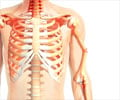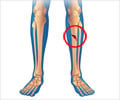Research says that children considered obese are more likely to suffer a distal radius fracture.
Research presented at the 2014 Annual Meeting of the American Academy of Orthopaedic Surgeons (AAOS) says that children considered obese are more likely to suffer a distal radius fracture, a bone break near the wrist, and experience complications related to the healing of the fracture.
In the study, "Childhood Obesity Increases the Risk of Failure in the Treatment of Distal Forearm Fracture," the records and outcomes of 157 patients with distal radius fractures who received emergency department and/or surgical treatment were collected from a large urban pediatric practice between January 2011 and June 2012. All patients were initially treated with fiberglass casting, and monitored until their bone break healed (radiographic union). Each patient's age, weight, height and number of office visits, subsequent surgeries and the type/angle of the fracture were recorded and analyzed. Sixty-six (42 percent) of the children were diagnosed as overweight, with a Body Mass Index (BMI) greater than the 85th percentile; and 46 (29 percent) as obese, with a BMI greater than the 95th percentile.
A total of 27 children required repeat reduction (the surgical repositioning of the fractured bone). Of the 91 children without obesity, 14 (12 percent) required the second procedure. However, of the children with obesity, 13 (28 percent) required repeat reduction. Obese children had significantly more follow-up visits requiring X-rays or other images, and were significantly less likely to have an initial, successful bone repositioning in the emergency room.
Children diagnosed as obese should be followed early and closely, and possibly have their fractures surgically pinned from the onset, to expedite and ensure appropriate healing.
Source-Eurekalert
















